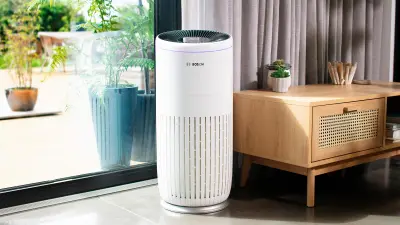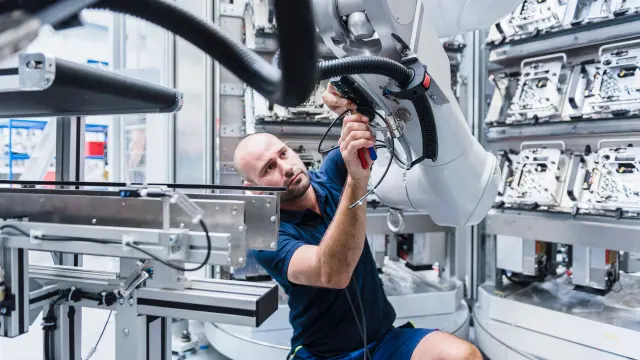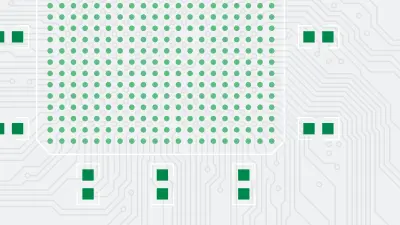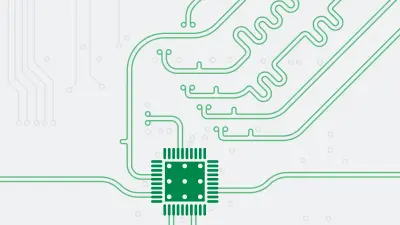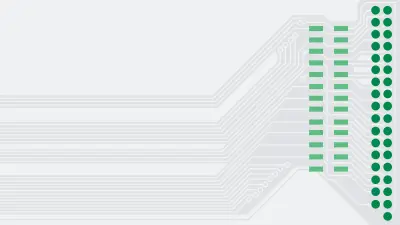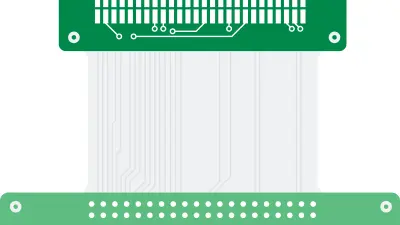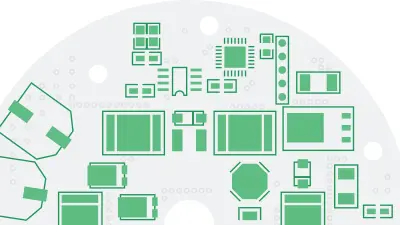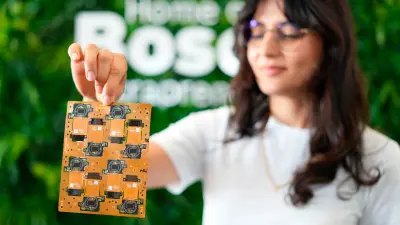Rigid PCBs — the world of electronic circuits starts here
Rigid or standard printed circuit boards (rigid PCBs) are an essential part of many electronic devices. As the name suggests, they have rigid layers, usually made of woven-glass-fiber-resin-reinforced laminate, and contain extremely small electronic circuits, which are connected to each other via copper tracks and metalized holes in two-layer and multilayer boards. A distinction is made between single-sided PCBs, double-sided PCBs, and multilayer PCBs. The number of layers depends on the complexity of the electronic circuit and the available space in the housing where the board is to be mounted. A rigid PCB offers a high degree of reliability, proven manufacturing processes, use in large series, and lower overall manufacturing costs than, for example, a flexible PCB.
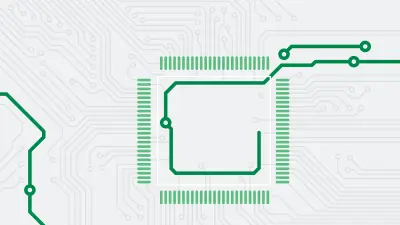
What is a rigid PCB?
A rigid printed circuit board is also known as a rigid PCB. Thanks to its simple design and reliability, it is used in countless electronic devices and systems. Electronic circuits are mounted on a rigid and inflexible substrate board. The most common materials for rigid PCBs are FR-4-classified flame-retardant glass-fiber-reinforced laminate or epoxy resins with excellent electrical and mechanical properties, but in some cases older types of materials such as composite epoxy materials (CEM) are used, especially CEM 1 and CEM 3 materials, which are mainly used for household appliances.
Most rigid printed circuit boards are multilayer PCBs. Here, several layers of substrate material, prepregs, and copper foils are firmly bonded to each other in multiple stacked layers. Each layer contains conductor tracks and insulation areas, while the outer layers contain pads and holes where the components are mounted and soldered.
Unlike flexible PCBs, which are flexible and can be used in curved shapes, rigid PCBs retain their shape and structure. This characteristic makes them ideal for applications where the PCB must be mounted in a rigid enclosure, or where a solid platform is needed for the electronic components.
Hybrid forms also exist: A rigid-flex PCB combines flexible and rigid areas. One example of a rigid-flex PCB is FR4 used in combination with Rogers material to create bendable PCBs where, with depth milling, some portion of the material on the Z-axis is removed, allowing the PCB to be bent.
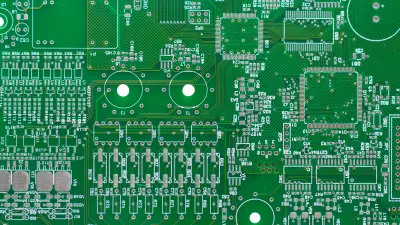
The benefits of rigid PCBs
Versatility
Rigid PCBs are versatile and are used in numerous applications.
Robust structure
Thanks to their rigidity, rigid PCBs are resistant to mechanical stress and vibration.
Performance
Rigid PCBs offer excellent electrical performance and can support complex circuits with many components. They are therefore well suited for demanding electronics projects and high-performance applications.
Cost-effectiveness
Compared to flex PCBs, rigid PCBs are typically less expensive to manufacture. This makes them attractive for projects with limited budgets.
Mounting
Thanks to their rigid structure, rigid PCBs are easy to mount and secure in enclosures. This increases manufacturability and makes many manufacturing steps in large-scale production easier and more efficient.
How rigid printed circuit boards are manufactured
Rigid printed circuit board manufacturing is a complex process in which a wide variety of materials must form a bond. This process does not tolerate any deviations, proceeds in several stages, and requires high-precision technologies. The most important production steps are:
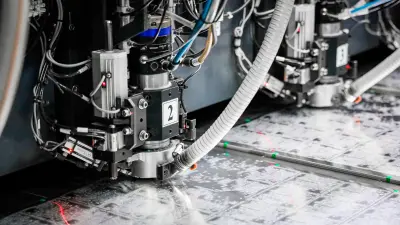
Design and layout
All electrical connections, component placements, and traces on the rigid PCB are usually defined in this step according to the requirements using a CAD program.
Material selection
The most common material for rigid PCBs are FR4-classified flame-retardant glass-fiber-reinforced laminates with excellent electrical and mechanical properties. Depending on the specific requirements of the application, materials such as Rogers, polyimide, aluminum, or ceramic are also used.
Copper plating
After the layers are built up, they are covered with a thin copper layer. This copper layer is then coated with photoresist.
Photolithography
A photoresist is applied to the copper layer and then exposed to UV light.
Etching
After exposure, the copper layer is etched, creating traces according to the photomask pattern. Any excess copper areas are removed.
Holes
Holes drilled into the circuit board create vias. These make the electrical connections between the different layers.
Lamination
High pressure and heat bond multilayer PCBs together tightly after drilling.
Copper plating
Another copper layer protects conductive tracks and vias and increases electrical conductivity.
Solder mask layer and labeling
A solder mask layer is applied to the PCB to define and protect the solder joints. The PCB can also be labeled to facilitate component and trace identification.
Rigid printed circuit boards with copperdot
We are your competent partner for the design of optimal circuits on rigid PCBs.
We offer:
- Single-sided PCBs, double-sided PCBs, and multilayer PCBs
- Complex designs
- Fast prototypes in five days
- Scalable small series up to 1,000 units in top quality
- Extensive testing and inspections according to IPC-TM-650 and IPC-A-600
- Customizable development with analysis
- State-of-the-art technology
We work together with you to determine your design requirements, and we accompany you competently through the entire planning and implementation process — from prototype to large-scale production.
Frequently asked questions about rigid PCBs
Rigid PCBs are used in almost all areas of life and are standard when it comes to electronic controls and circuits in consumer electronics and home appliances, communications, the automotive industry, medical technology, industrial control systems, science and research, defense and aerospace, and many others.
While a flexible PCB is thin, lightweight, and bendable, a rigid PCB is made of woven-glass-fiber-resin-reinforced laminate and is therefore rigid.
Rigid PCBs are versatile and are used in numerous applications. Thanks to their rigidity, rigid PCBs are resistant to mechanical stress and vibration, while at the same time offering excellent electrical performance — and all with a high degree of cost efficiency.
Flexible PCBs can be used in curved shapes; rigid PCBs retain their shape and structure. This characteristic makes them ideal for applications where the PCB must be mounted in a rigid enclosure, or a solid platform is needed for the electronic components.
Rigid or standard printed circuit boards are an essential part of many electronic devices. A rigid PCB is characterized by high reliability, proven manufacturing processes, use in large series, and lower overall manufacturing costs.
